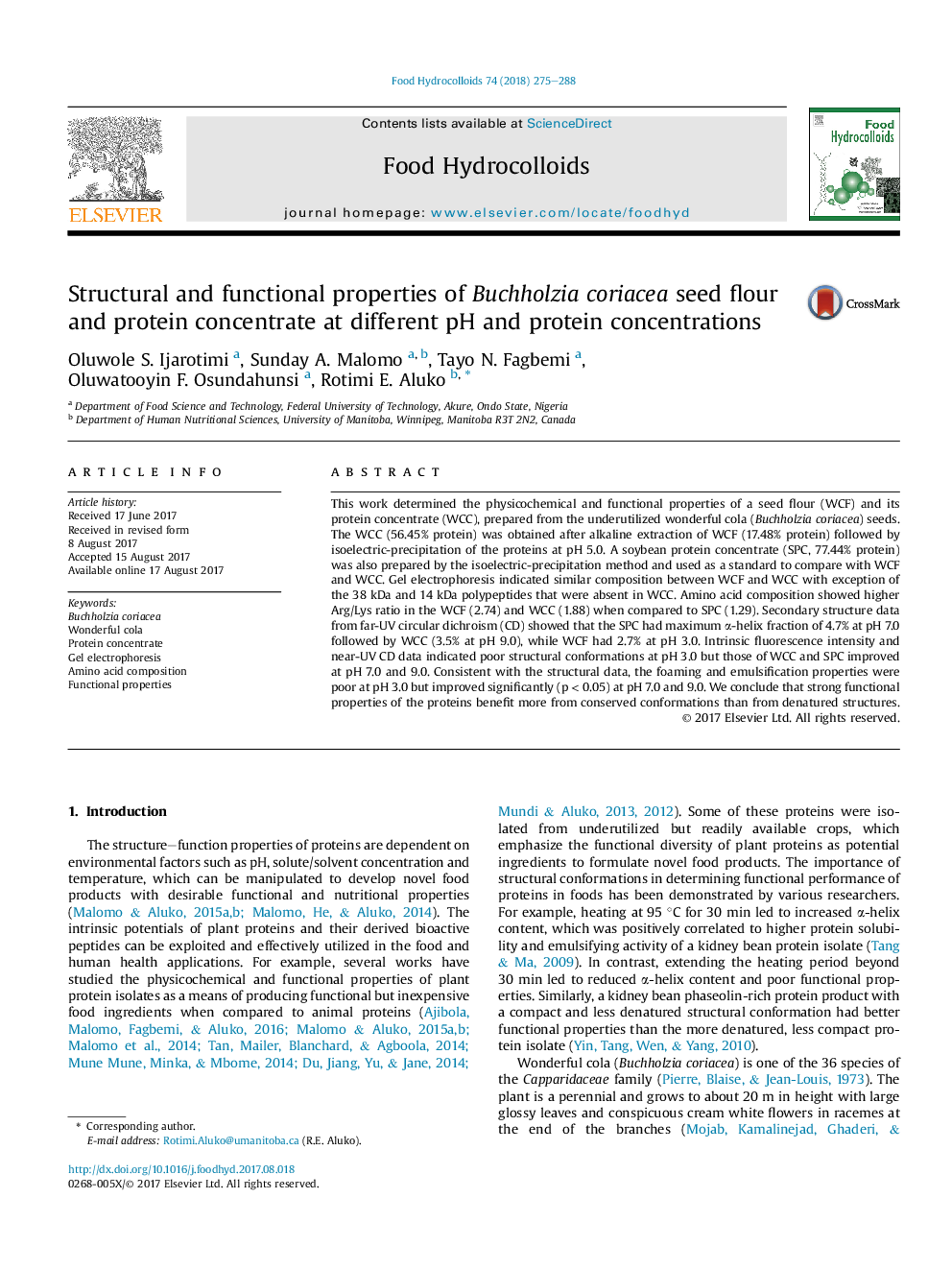| کد مقاله | کد نشریه | سال انتشار | مقاله انگلیسی | نسخه تمام متن |
|---|---|---|---|---|
| 4983749 | 1454403 | 2018 | 14 صفحه PDF | دانلود رایگان |

- Similar polypeptide composition in Buchholzia coriacea flour and protein concentrate.
- Higher number of polypeptides in soybean protein concentrate than B. coriacea proteins.
- B. coriacea flour and protein concentrate had higher Arg/Lys ratio than soybean protein.
- B. coriacea protein concentrate formed better foams and emulsions than the flour.
- Soybean proteins formed better foams and emulsions than B. coriacea proteins.
This work determined the physicochemical and functional properties of a seed flour (WCF) and its protein concentrate (WCC), prepared from the underutilized wonderful cola (Buchholzia coriacea) seeds. The WCC (56.45% protein) was obtained after alkaline extraction of WCF (17.48% protein) followed by isoelectric-precipitation of the proteins at pH 5.0. A soybean protein concentrate (SPC, 77.44% protein) was also prepared by the isoelectric-precipitation method and used as a standard to compare with WCF and WCC. Gel electrophoresis indicated similar composition between WCF and WCC with exception of the 38 kDa and 14 kDa polypeptides that were absent in WCC. Amino acid composition showed higher Arg/Lys ratio in the WCF (2.74) and WCC (1.88) when compared to SPC (1.29). Secondary structure data from far-UV circular dichroism (CD) showed that the SPC had maximum α-helix fraction of 4.7% at pH 7.0 followed by WCC (3.5% at pH 9.0), while WCF had 2.7% at pH 3.0. Intrinsic fluorescence intensity and near-UV CD data indicated poor structural conformations at pH 3.0 but those of WCC and SPC improved at pH 7.0 and 9.0. Consistent with the structural data, the foaming and emulsification properties were poor at pH 3.0 but improved significantly (p < 0.05) at pH 7.0 and 9.0. We conclude that strong functional properties of the proteins benefit more from conserved conformations than from denatured structures.
282
Journal: Food Hydrocolloids - Volume 74, January 2018, Pages 275-288